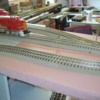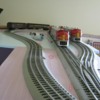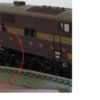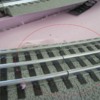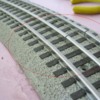Here is an update...seems there are other issues.
The first issue is that I can hear "rubbing sounds(?)" on the curve after the slow spot.
It is still slow at this point, but not as slow, as it is also past the section where it goes from fast to slow. It is a gentle rubbing sound every train I own makes there....Odd, these are 48' curves.
Another issue, is that it seems my vintage post war 2343 and 2353's handle this slow spot a lot better than my recently purchased Lionel 6-38103 Texas Special F-3. My Williams perform better over it as well, but it's still definately a slow spot.
Why would that 6-38103 handle it worse?
Also, the TX Special 6-38103 requires more transformer power than even my vintage post war F3's from the 50's.
Thankfully, as soon as my Lionel command control unit arrives, it will be run in TMCC mode "only".
For an even worse issue, on the curve preceding the slow spot all my trains are fine on it, but my Williams E7 which the box states runs on O-31 curves (LOL), is raising it's truck on this first curve and shorting out.
It is a big engine that E-7, yet this is happening on a O-48 curve?
I wonder if that is a Williams typo...should be O-72?
Chuck, I am going to see if I can remove that S-Curve stand by....




